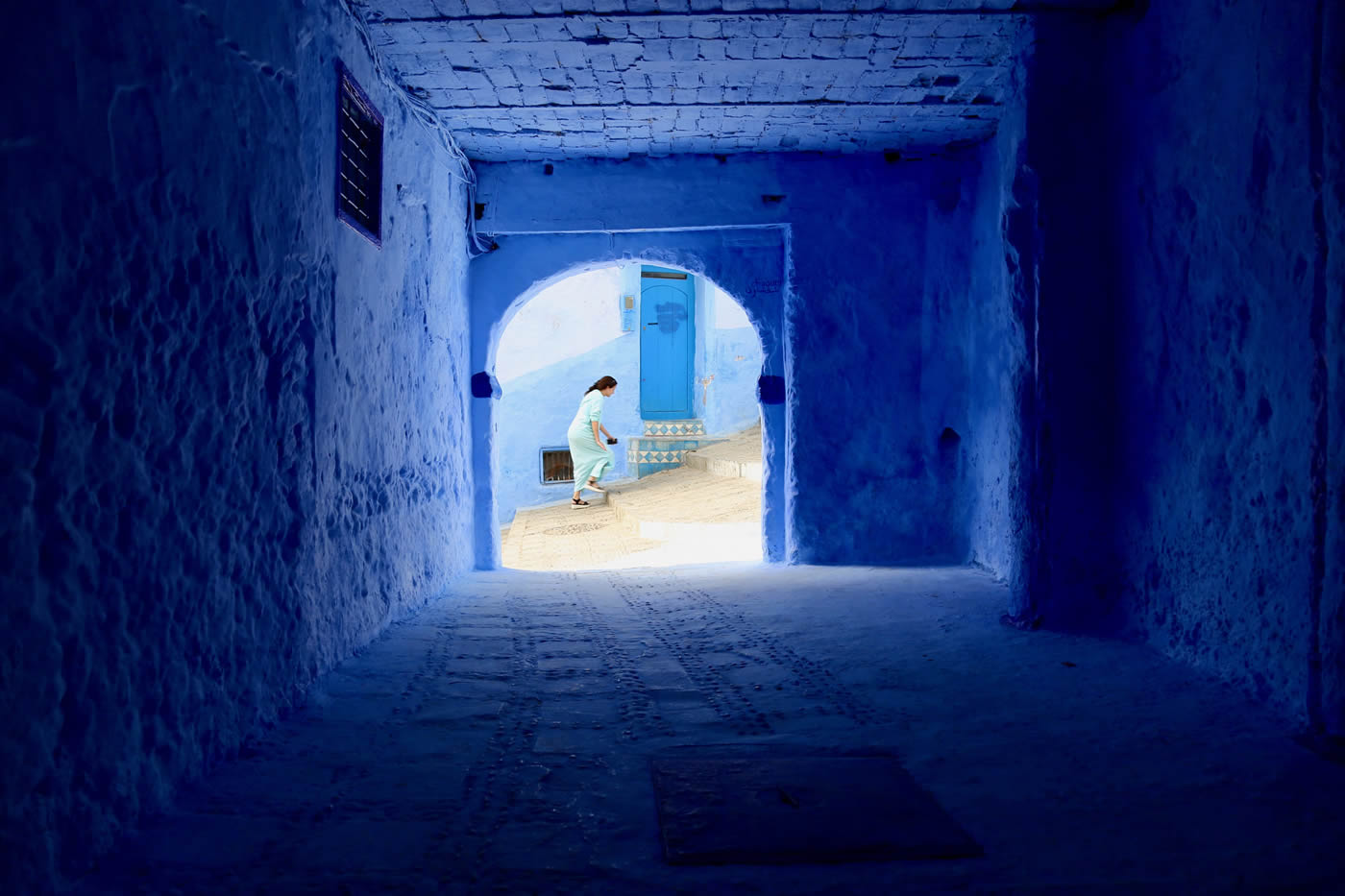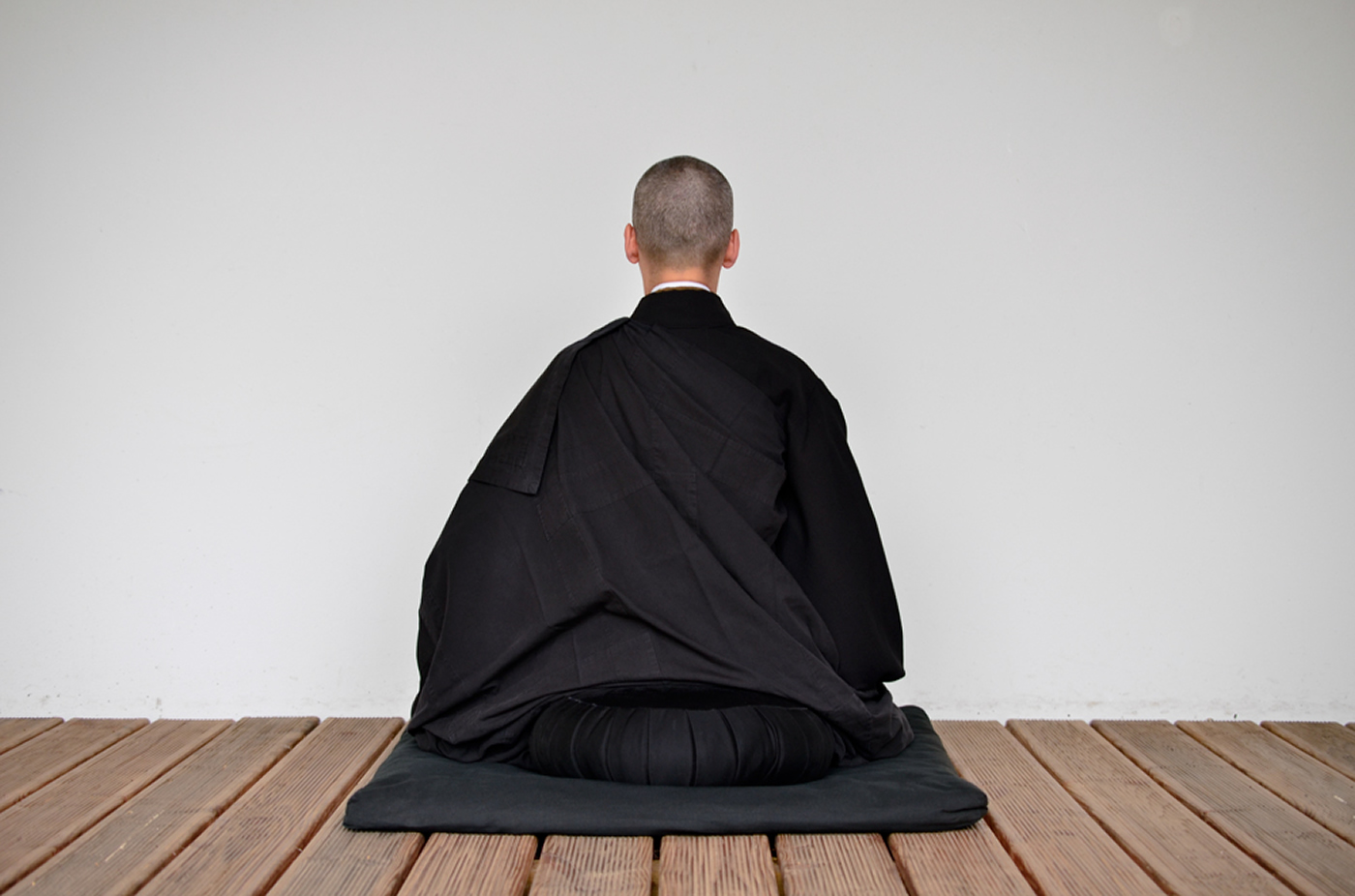Class 8: What it’s like, living in the Bardo
[su_icon icon=”icon: link” color=”#ff1259″ size=”20″ shape_size=”12″ url=”https://www.youtube.com/watch?v=ztHC1Ce8_qE&t=0s” target=”blank”]Video[/su_icon]Hi. Hi, welcome back to our online retreat—the Wheel of Life Retreat. And I’d like to welcome Zhou Xiao Ping and thank her for translating today. So we’re on session eight and the name of this session is “What it’s Like to Live in the Bardo.”
The picture we’re using for this class is a burnt, black tree trunk, and we’ll explain more about that later.
So I think first … most of us know the word bardo (BAR DO). bar (BAR) means “in-between,” and bardo means “the state in-between.” It means the state between after you die and until you are reborn. So we’re continuing with this idea of how lousy is life, okay? We have trouble all through our life, and then also again in the bardo we have the same trouble. So let’s talk about what it’s like to be in the bardo.
I’m going to read from the Tibetan. I hope you’ll follow the Tibetan. I know not all of you want to learn Tibetan, but I’m trying to put a seed in your mind to read these very holy books. To read the original—it puts a very deep seed in your mind. And we will meet again in the next life to study translation together. So I’m planting those seeds.
nyipa shi ne bardo drup luk ni (GNYIS PA SHI NAS BAR DO ‘GRUB LUGS NI) Now the second part of this discussion is: how is it that we go into the bardo? And what happens in the bardo? chi si gakpa (‘CHI SRID ‘GAGS PA). chi si (‘CHI SRID) is a special expression. There are four kinds of sipas (SRID PA), and chi si is one of them. In this case, si (SRID) means “kind of being.” And chi si means “the person or the being at the time of their death.”
So chi si gakpa… gakpa (‘GAGS PA) means “ending.” So chi si gakpa means “the person who is dying” on their hospital bed. The person is dying, and then du nyam du (DUS MNYAM DU) means “at the same moment.” sang dey to men shindu (SRANG MDA’I MTHO DMAN BZHIN DU) means that in the old days when they weigh food, for example, they will use a scale with two plates; and as this plate comes down, this plate goes up. So they say the appearance that you have at the time of death—your outer appearance—it starts to fade, and at the same time another appearance starts to come in, and you take the appearance of the person in the bardo.
[su_icon icon=”icon: link” color=”#ff1259″ size=”20″ shape_size=”12″ url=”https://www.youtube.com/watch?v=ztHC1Ce8_qE&t=5m4s” target=”blank”]Video[/su_icon]So your face, your body start to change. The face and body you had when you are dying is replaced by the the face and the body that you’re going to have in the bardo. And that bardo person’s appearance … here it says ngun du kyi sipay suk chen te (SNGON DUS KYI SRID PA’I GZUGS CAN TE), it “matches the appearance of the person before.”
And this is a very confusing idea, and many people misunderstood it. When I die and I go to the bardo, my appearance will be the appearance “of the person before.” But it means the appearance of the person before your next death. So that means the appearance you are going to have in your next life. So, the appearance that you take on in the bardo, it’s related to who you are going to be after you come out of the bardo.
So here it says kyewa chimay lu kyi che yip chen du drup (SKYE BA PHYI MA’I LUS KYI BYAD DBYIBS CAN DU GRUB)—you take on a body that is related to the body you’re going to have when you come out of the bardo. nyun du kyi sipa shepay dun (SNGON DUS KYI SRID PA ZHES PA’I DON) … Here he clarifies. He says, by the way, when the scripture says “the being of the time before,” it means the being you’re going to be for a whole lifetime before you die in the next lifetime.
kachik gi … (KHA CIG GIS) … shinpo de sunpay kap kyi nampa dang cha che jindra yupa shin (GSHIN PO DE GSON PA’I SKABS KYI RNAM PA DANG CHA BYAD JI ‘DRA YOD PA BZHIN) Some people say the dead person in the bardo looks like the person they used to be. bardo la denduk pe (BAR DO LA BSDAD ‘DUG PAS)—and they sit in the bardo and you can send them messages and they will reply, even with written messages to you. And in America, we have some fortune tellers and you go to them and you say, “I want to talk to my father who died,” and they kind of have trick ways to write letters and they say, “Oh look, he wrote you a letter.”
[su_icon icon=”icon: link” color=”#ff1259″ size=”20″ shape_size=”12″ url=”https://www.youtube.com/watch?v=ztHC1Ce8_qE&t=8m48s” target=”blank”]Video[/su_icon]sok dzun yin (ZOG RDZUN YIN)—here says, “they’re all fake.” So he says, “be careful of these fortune tellers.” Some of them are just making money. They are making fake letters from your relatives who died. But you can see a bardo being and you can talk to them. It’s possible. dendra re nyi tongwa si kyang (DE ‘DRA RE GNYIS MTHONG BA SRID KYANG) says “it’s possible you could see your relative in the bardo.” It is possible. And it’s also possible that someone who looks like your relative in the bardo is not really your relative in the bardo.
mi mayin gyi (MI MA YIN GYIS) … shinpoy suk sung ne jikten pelpa lu bar che (GSHIN PO’I GZUGS BZUNG NAS ‘JIG RTEN PHAL PA SLU BAR BYED)—this is a kind of spirit being. It’s a kind of ghost, and they like to take on the appearance of your relative, and they trick you. je mi la (RJE MID LA). mi la (MIS LA) means “Milarepa,” a very, very famous meditator from about a thousand years ago. And there’s a story in his hundred-thousand songs, which in Tibetan is gur bum (MGUR ‘BUM), which means “hundred-thousand songs.” And there’s a story there about how he met someone’s father from the bardo. And he guided that person. And apparently there was also some ghost in the story who was imitating that person.
And I’d be interested if any of you guys listening could read those hundred-thousand songs of Milarepa, which was translated into English a long, long time ago by somebody named Garma C.C. Chang. The name he translated—”hundred-thousand”—is a mistake. He made a mistranslation in the title. So for example, sungbum (GSUNG ‘BUM) doesn’t mean a hundred-thousand books; it just means a collection of books. But generally the translation is not so bad and maybe some of you guys can find this story. It’s not a hundred-thousand stories, but it’s a lot, and I don’t have time to read the whole thing, but you guys can read it.
de na bardowa ni wangpo kun tsangwa (DES NA BAR DO BA NI DBANG PO KUN TSANG BA) So, a bardo being really does have eyes, ears, nose, and everything complete. ngun she yupa (MNGON SHES YOD PA) means abhijnyana—”they have special mental abilities.” For example, they can understand all languages. And they have dzu trul (RDZU ‘PHRUL). dzu trul means they “can do miracles.” For example, they can walk through walls, they can travel millions of miles in an hour; and Buddhism says that’s how new planets are populated actually. That’s how we people came to this world.
So worlds are countless, beginningless, and people move from one to another one a million miles away and they populate it. Then that ability to walk through walls, it’s very interesting. If the wall is part of a temple or a holy place, like Bodhgaya, when they hit that wall, they cannot go through. Any wall in the world, they can walk through it, except that one. So some wall that’s connected to a holy place will stop them. And the skin at the back of a woman’s womb is the same. gang la-ang mi tokpa (GANG LA’ANG MI THOGS PA) means “they can’t go through” and they get stuck there, and that’s where many of them are reborn.
[su_icon icon=”icon: link” color=”#ff1259″ size=”20″ shape_size=”12″ url=”https://www.youtube.com/watch?v=ztHC1Ce8_qE&t=15m3s” target=”blank”]Video[/su_icon]Next, Pabongka Rinpoche describes the physical appearance of these beings. So we said they take on the appearance that corresponds to their next birth. That doesn’t mean if they’re going to be reborn as a very tall guy that during the bardo they look like a very tall guy. That’s not what it means. It means what kind of rebirth they’re going to take, you can tell it from the appearance in the bardo.
So he gives here some examples: nyelwa, yidak, dundro, dupay hla, mi (DMYAL BA, YI DVAGS, DUD ‘GRO, ‘DOD PA’I LHA MI). He gives five examples.
1. Person in the hell realms.
2. Person who becomes a hungry ghost.
3. Person who is going to become an animal.
4. Person who is going to be a pleasure being in the desire realm.
5. And a human.
What do they look like in the bardo? me rim shin (MAS RIM BZHIN) means that if we start one-by-one to tell you from the bottom—meaning from the hell realm—dong dum me tsikpa (SDONG DUM MES TSIG PA) means people in the bardo who are going to be reborn into the hell realms, their body looks like the “stump of a burnt tree.” If you’re going to be born as a hungry ghost, your body looks like water.
If you’re going to be born as an animal, duwa (DU BA), your body looks like “smoke.” dupay lha, mi—if you’re going to be a pleasure being or human in the desire realm, ser sangpo tabuy dok tar (GSER BZANG PO LTA BU’I MDOG LTAR)—you have a “body that looks like very fine gold.” suk kampay bardo karpor yu la (GZUGS KHAMS PA’I BAR DO DKAR POR YOD LA)—if you are going to be born into the form realm (maybe you did those four meditations, right?), your “body will be like a shining white color in the bardo.”
suk me du kye na bardo me (GZUGS MED DU SKYE NA BAR DO MED), but “if you’re going to be born into the formless realm there is no bardo,” because you’re not going to have a body. So it’s interesting, if I die here, sitting here, I will go immediately into my mental body. Right here. And that’s where the formless realm is—wherever I die. But otherwise, kind of the purpose of the bardo is to travel from the place you die to the place you’re going to be born. It could be one meter. It could be millions of miles. And it takes the same time.
[su_icon icon=”icon: link” color=”#ff1259″ size=”20″ shape_size=”12″ url=”https://www.youtube.com/watch?v=ztHC1Ce8_qE&t=19m40s” target=”blank”]Video[/su_icon]Okay, the next paragraph says: me gewa chepay bar si ni (MI DGE BA BYED PA’I BAR SRID NI). Again, si means “the person,” bar means “in the bardo”—so bar si means “the person in the bardo.” If, generally speaking, they were not a very nice person their whole life, before, tsen mo mun nak tu nangwa tabu (MTSAN MO MUN NAG TU SNANG BA LTA BU)—”they look kind of like darkness.” And that’s their appearance. They look like dark, black. Like night.
gewa chepay bar si ni (DGE BA BYED PA’I BAR SRID NI)—But the “bardo of a person who was a good person their whole life, nambu karpo (SNAM BU DKAR PO) means they look like “white silk.” da u dang chepay tsen moy nangwa (ZLA ‘OD DANG BCAS PA’I MTSAN MO’I SNANG BA)—they “look like the white moonlight at night.” bardoway tse tse (BAR DO BA’I TSE TSAD) means “how long do these beings live for?” sung tsul mang yang (GSUNGS TSUL MANG YANG)—There’s “many, many different scriptures that say different things.”
Most of those scriptures are incorrect. There’s one in particular called … they translated it as “Tibetan Book of the Dead.” bardo trang drul (BAR DO ‘PHRANG SGROL), and in the tradition of Tsongkhapa, who is very, very strict about his authoritative sources, he says the original of that book is this word here … it’s fake—so dzun (BZO RDZUN). It’s just not correct. So this tradition—Tsongkapa’s tradition—would say that book is not correct about the bardo.
pel cher shak dun du shepa (PHAL CHER ZHAG BDUN DU BSHAD PA)—but most of the great books chimay tsoy shak in dra (PHYI MA’I TSO’I ZHAG YIN ‘DRA)—say that bardo being always lives for seven days. They cannot live for more than seven days. Then there is a funny debate where Pabongka says, “I wonder which kind of day they’re talking about.” Because a day in the hells or a day for the pleasure beings can be a thousand years … of human years. And he says chimay tsoy shak (PHYI MA’I TSO’I ZHAG)—shak (ZHAG) means “one day and night” or 24 hours. yin dra (YIN ‘DRA) means “my opinion,” it’s seven days of where you’re going to. But he’s not totally sure. yin dra means “I’m not totally sure.”
But traditionally, in the Buddhist monastery for example, we count seven days; and we start from the day that the person died. So if they died at one minute to midnight on Tuesday, one minute before midnight on Tuesday night, they die at 11:59 at night, still we count that as number one when we count seven days. And I had an opportunity on a long plane flight once, I talked to my own teacher—who again was a disciple of Pabongka Rinpoche and Pabongka Rinpoche’s heart disciple, Trijang Rinpoche—and I asked him many questions about these bardos.
And he gave me some great answers and I put all of those into a question-and-answer paper, and we’re going to offer it on this broadcast. There’ll be a link that you can click on, and you can go to that explanation by my teacher. shak dun ne chi (ZHAG BDUN NAS ‘CHI)—then they will “die after seven days.” Then either they go to the life they’re supposed to go to, or they come back to another bardo for seven more days. Or less. So let’s say they’re in the bardo for ten days, after the first seven days they will die, they will come back to that bardo for three more days. Then they die and become whatever they’re supposed to become.
[su_icon icon=”icon: link” color=”#ff1259″ size=”20″ shape_size=”12″ url=”https://www.youtube.com/watch?v=ztHC1Ce8_qE&t=26m18s” target=”blank”]Video[/su_icon]So he calls it here, he has a funny name, he calls it chi chung re (‘CHI CHUNG RE), he means “mini-death.” Mini-death. They have bardo mini-deaths every seven days. kye ne ma nye tse (SKYE GNAS MA RNYED TSE)—and “if they don’t find the rebirth” that they are supposed to have, len dun gyi bar detar chi chung re che sung (LAN BDUN GYI BAR DE LTAR ‘CHI CHUNG RE BYED GSUNGS)—the great books say, and for example the Abhidharma Kosha, which is one of the greatest books of Buddhism … and if you’re really interested about the bardo, you should read Stanley’s translation of the Abhidharma, and that’s completely correct.
It’s almost two thousand years ago. And that’s a better source to read than the “Tibetan Book of the Dead,” which has many false views in it. len dun gyi bar detar chi chung re che sung—”those great books say you will have maximum seven mini-deaths.” So you must take your rebirth within 49 days, counting the day of the death as the first day. That’s why we traditionally do those jang chok (BYANG CHOG) prayers, reminding grandpa of all the good things he did.
Traditionally, we do those prayers on the seventh day after death—counting the death day as the first day. And then again on the 49th day, because within that time period they must go on to their next life. And the seed must be activated for that next life. Sorry, not activated—it must open for the next life. It’s activated as they die from the past life … their last awareness of that life, and then it actually opens at the end of the bardo and they are born into their next life. And now … we didn’t learn these things in school or in university. Princeton doesn’t have a course on bardo. But everyone has to die, everyone goes through this bardo, and it’s important to study it, and it’s important to learn it.
[su_icon icon=”icon: link” color=”#ff1259″ size=”20″ shape_size=”12″ url=”https://www.youtube.com/watch?v=ztHC1Ce8_qE&t=30m0s” target=”blank”]Video[/su_icon]There’s a joke in the monastery: If you know you’re going on a … like I used to go there to debate in the geshe (DGE BSHES) courses, and I remember on the day I was coming back to America, I would debate in the morning, and then I would run to the airport and come back. On the day I had to leave the monastery to come back to America, I would still debate in the morning. And I remember the monks used to ask me, “You’re going to leave today—why are you debating in the morning?” “Just go get your suitcase ready.”
So we’re all going to die. It might be today. Get your suitcase ready! Study the bardo. We don’t know if we’re going to enjoy the money or the family we have next week. We don’t know if we will still be here. But sooner or later we have to go to the bardo, so let’s pack our suitcase, let’s get ready for that, okay?
See you in the next online session, which is number nine.
And thank you for translating, Zhou Ping.






